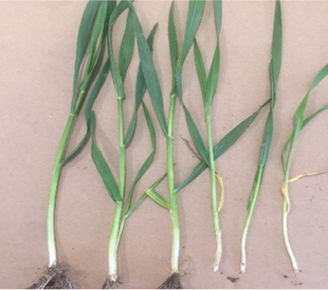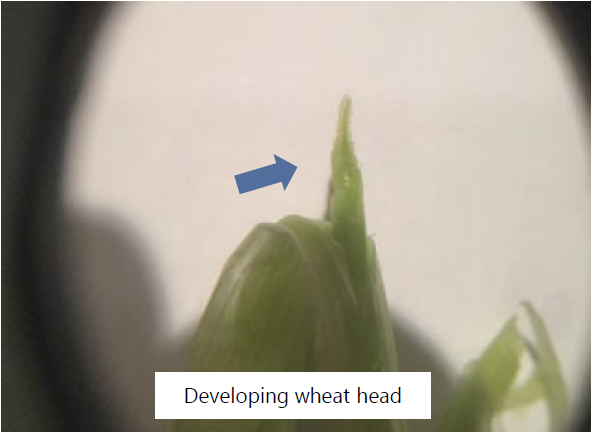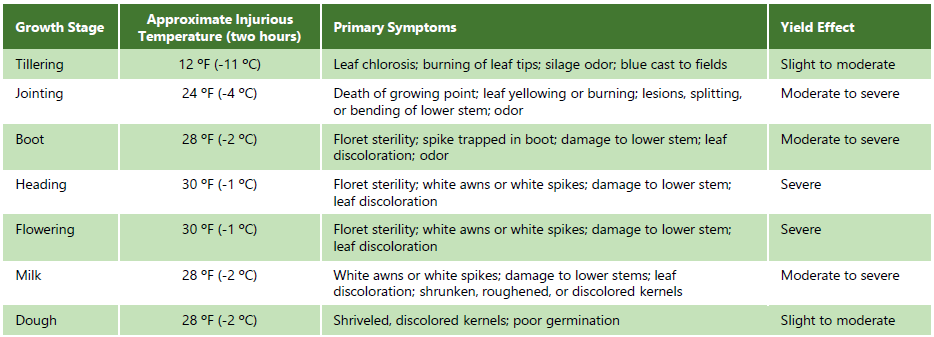There are three major factors that have the greatest impact on potential freeze damage to a growing wheat crop.
- Growth stage when the freeze occurs. (Susceptibility increases greatly when head and growing point move above soil surface.)
- Actual temperature of susceptible plant parts. (Temperatures will vary within the field and within the crop canopy.)
- Duration of freezing temperatures

Figure 1. Wheat plants with varying stages of tiller development
- It will take 3-7 days after the weather event for any definitive signs to show up in the plant.
- Each individual wheat plant will have tillers in various stages of development, with the largest tillers being the most advanced. If one or two of the largest tillers are damaged, the smaller tillers can still produce a head with some compensation in size.
Assessing Damage
- It will take 3-7 days after the weather event for any definitive signs to show up in the plant.
- Each individual wheat plant will have tillers in various stages of development, with the largest tillers being the most advanced. If one or two of the largest tillers are damaged, the smaller tillers can still produce a head with some compensation in size.

- Evaluate the largest tillers by slicing the stem and finding the developing growing point. If the tiller is jointed, the head can be found just above it. In tillers that have not yet fully jointed, the growing point may still be above the soil surface.
- Evaluate for discoloration, developing heads that are not firm or “crisp,” slimy tissue inside the stem, or a rotting odor.
- Try to calculate a projected head count per square foot to use as a guide in decision making.
- At least 50 viable wheat heads per square foot are desired
in freeze damaged wheat.
Table 1. Temperatures that cause injury to wheat at spring growth stages and symptoms and yield effect of spring freeze injury (Klein, 2006).

Klein, R.N. 2006. Freeze injury to Nebraska wheat. Univ. of Nebraska Extension. EC132 http://extensionpublications.unl.edu/assets/pdf/ec132.pdf
The foregoing is provided for informational use only. Please contact your Pioneer sales professional for information and suggestions specific to your operation. Product performance is variable and depends on many factors such as moisture and heat stress, soil type, management practices and environmental stress as well as disease and pest pressures. Individual results may vary.









